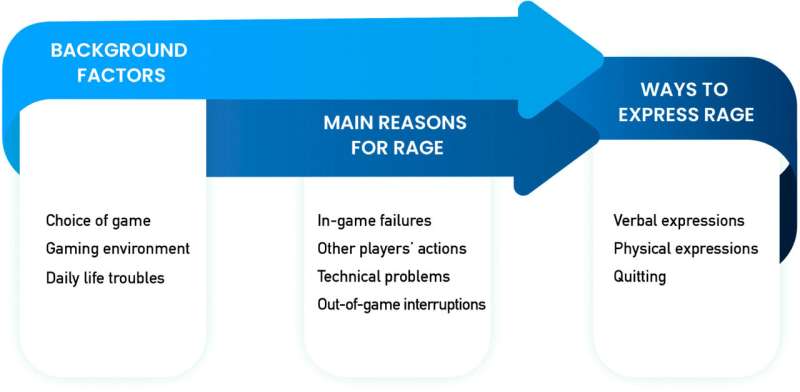Credit: University of Eastern Finland
Children's outbursts of rage while playing digital games are causing both concern and public debate around the topic. Taking a novel approach to gamer rage, a new study conducted at the University of Eastern Finland examines the topic from a child's perspective, finding complex reasons for gamer rage in children. As data, the researchers used interviews with, and essays by, children. The study examined children's views on the reasons for and background factors of gamer rage. In addition, the researchers analyzed how rage manifested itself.
The results show that a reason for gamer rage in children was often found in their own performance.
"For example, repeated or last-minute in-game failures, or losing to a beginner, caused annoyance and rage. In digital gaming, competitiveness and social factors play a major role in general," says Project Researcher Juho Kahila from the University of Eastern Finland.
Children often compared their own performance to that of other players. Frustrating actions by other players, such as cheating or losing a game due to incompetent teammates, were perceived as a source of rage. In addition, out-of-game interruptions, such as having to do chores or homework, and technical problems, such as a poor internet connection, were also identified as sources of rage.
Failure, humiliation, noise and hunger predispose to rage
Some games were perceived as rage triggering. For instance, playing against a real human, or getting humiliated by another player were identified as factors predisposing to gamer rage. Besides choice of game, also the gaming environment had an influence on rage.
"Toxicity within the gaming community, such as unpleasant remarks or bullying by other players, as well as a noisy gaming environment, were identified as predisposing to rage. In addition, troubles in daily life, such as having a bad day at school, or feeling hungry, were also recognized as factors contributing to rage," Kahila says.
In the children's essays, gamer rage often took the form of verbal expressions, but also physical expressions, as well as quitting gaming. In an outburst of rage, children not only yelled and cursed, but they also kicked, beat and threw items on hand, such as their gaming equipment or pieces of furniture. A gaming session was often quit while feeling outraged. However, the results also showed that quitting a gaming session, or switching to a less infuriating game, were often used as a preventive measure to avoid becoming even more enraged.
Published in the International Journal of Child-Computer Interaction, the study shows that the reasons behind gamer rage in digital gaming are very complex—and that children are good at naming them. According to Kahila, many of the reasons leading to rage in digital gaming, such as in-game failures, cheating opponents, or a toxic gaming environment, are similar also in other gaming settings.
"For example, feelings of outrage caused by one's own mistakes, a penalty missed by a referee, or annoying behavior by an opponent, are all familiar from ice hockey, just to pick an example," Kahila points out.
More information: Juho Kahila et al, Gamer rage—Children's perspective on issues impacting losing one's temper while playing digital games, International Journal of Child-Computer Interaction (2022). DOI: 10.1016/j.ijcci.2022.100513
Provided by University of Eastern Finland
























